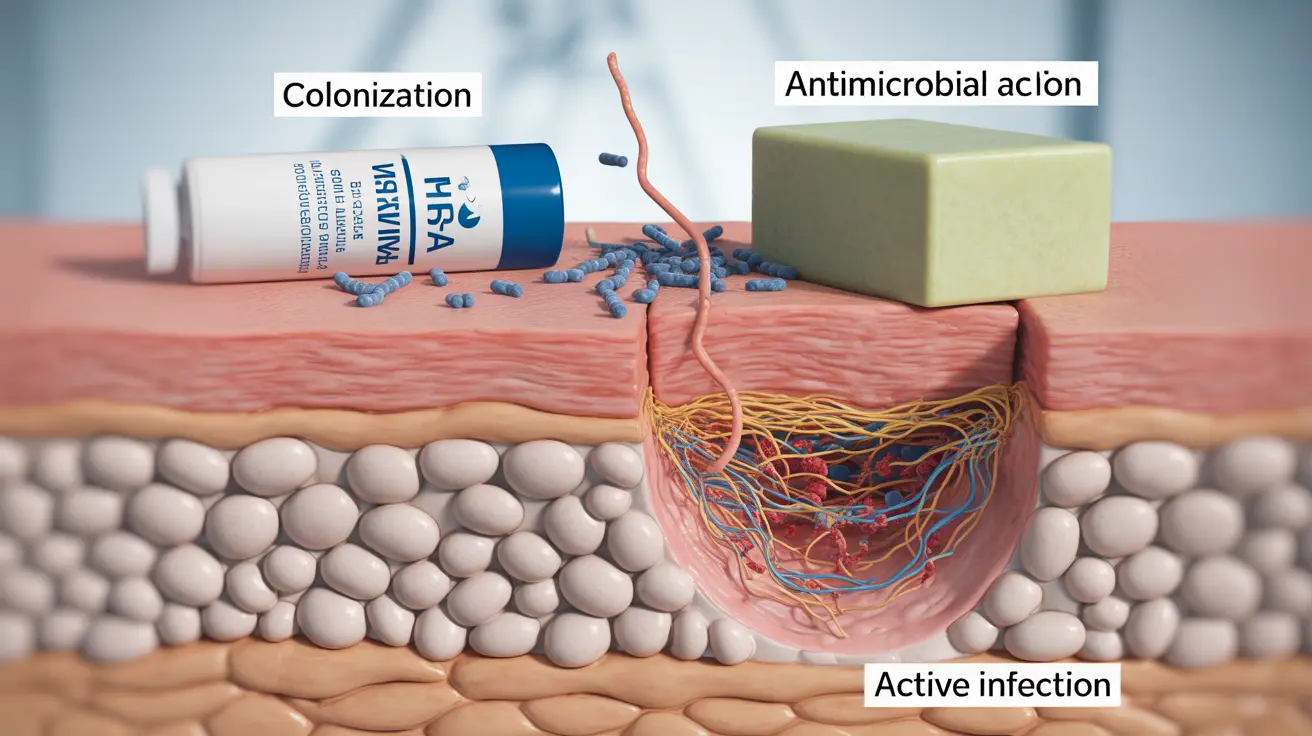Methicillin-resistant Staphylococcus aureus (MRSA) is a serious bacterial infection that raises many questions about long-term recovery and recurrence. If you're wondering "once you have MRSA, do you always have it?" you're not alone. This comprehensive guide will help you understand MRSA persistence, treatment effectiveness, and prevention strategies.
While MRSA can be a challenging infection to manage, understanding its nature and following proper treatment protocols can significantly improve your chances of successful recovery and prevention of future infections.
Understanding MRSA Colonization vs. Active Infection
MRSA can exist in two distinct states in the human body: colonization and active infection. During colonization, the bacteria live on your skin or in your nose without causing symptoms. An active infection occurs when MRSA enters the body through cuts or wounds, causing visible symptoms and illness.
It's important to note that being colonized with MRSA doesn't mean you'll always develop an active infection, but it does increase your risk.
MRSA Treatment and Recovery Timeline
The duration of MRSA treatment varies depending on several factors, including:
- Infection severity
- Location of the infection
- Your overall health status
- Type of treatment prescribed
- Treatment adherence
Most MRSA infections require a combination of treatments, which may include:
- Targeted antibiotics specific to MRSA strains
- Wound drainage and cleaning
- Topical antimicrobial treatments
- Regular wound dressing changes
Clearing MRSA from Your System
Complete MRSA clearance is possible with proper treatment, though some people may experience colonization even after successful treatment of an active infection. The key to successful clearance involves:
Medical Treatment Protocols
Healthcare providers typically prescribe specific antibiotics that target MRSA, such as vancomycin, daptomycin, or linezolid. Following the complete prescribed course is crucial for effective treatment.
Decolonization Procedures
In some cases, healthcare providers may recommend decolonization procedures, which might include:
- Nasal antibiotic ointments
- Antimicrobial body washes
- Special cleaning protocols for personal items
- Regular screening to monitor MRSA presence
Preventing MRSA Recurrence
Taking proactive steps to prevent MRSA recurrence is essential for long-term health. Key prevention strategies include:
- Maintaining excellent personal hygiene
- Keeping wounds clean and covered
- Avoiding sharing personal items
- Regular handwashing with soap and water
- Using clean towels and bedding
- Sanitizing frequently touched surfaces
When to Seek Medical Attention
Recognition of MRSA symptoms and prompt medical attention are crucial. Watch for:
- Red, swollen, or painful areas on the skin
- Wounds that don't heal properly
- Areas that feel warm to the touch
- Pus or other drainage from skin lesions
- Fever or general illness symptoms
Frequently Asked Questions
1. Once you have MRSA, can you ever completely get rid of it or do you always carry the bacteria? You can completely clear MRSA from your system with proper treatment. However, some people may remain colonized without active infection. Regular screening and proper hygiene can help monitor and manage MRSA status.
2. How long does MRSA stay in the body after treatment, and what factors affect its clearance? MRSA clearance time varies by individual and depends on factors like treatment adherence, immune system strength, and exposure risk. With proper treatment, active infections typically resolve within 1-2 weeks, though complete clearance may take longer.
3. What treatments are most effective for clearing MRSA infections and preventing recurrence? The most effective treatments include appropriate antibiotic therapy, proper wound care, and decolonization procedures when necessary. Prevention strategies like good hygiene practices are essential for avoiding recurrence.
4. How can you prevent MRSA from coming back after you have been treated? Prevent MRSA recurrence through consistent hygiene practices, regular handwashing, keeping wounds clean and covered, avoiding shared personal items, and following all medical recommendations for follow-up care.
5. What are the signs of MRSA infection, and when should you see a doctor for treatment? See a doctor if you notice skin infections that are red, swollen, painful, warm to touch, or containing pus. Also seek medical attention if you develop fever or if skin infections don't improve with basic care.




